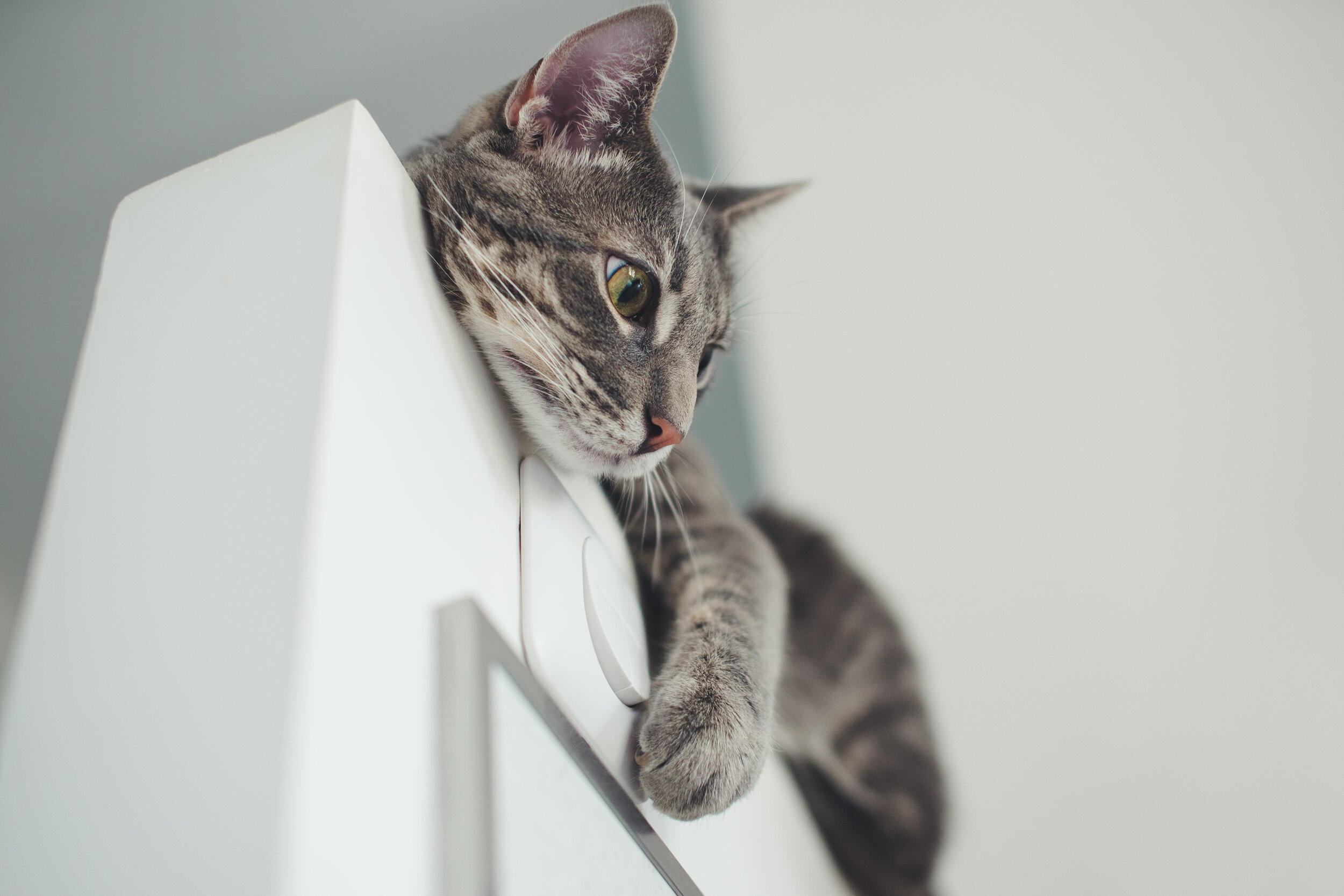Just like humans, cats can suffer from anxiety too, which can affect their health and interactions with you. Gaining an understanding of your cat’s normal nature and behaviour can help you to identify anxiety and stress in your cat and how to best keep them calm and happy.
Causes of anxiety and stress in cats
Cats may appear independent and confident but they are generally happiest with the familiar. Changes to their routine and unfamiliar things, people and places can make them feel a little anxious. Situations such as a car trip, visit to the vet, loud noises, strangers in the house or a new furry family member can easily upset your cat. Some of the common causes of anxiety in cats include:
Noise – your cats hearing is extremely sensitive and they can hear higher pitched sounds than humans or most dogs. The noise of other cats, animals or strange people can easily startle a cat. It is important to use a low, soothing voice when talking to your cat. You can also help to dampen the noise when your cat is in their carrier by covering it with a towel. If noisy visitors bother your cat, you may want to take them to a quiet room, away from the main gathering where they can relax.
No privacy – Eating, sleeping and toileting are private actions and cats can easily become stressed when they have to do so with others around. If you have more than one pet, you need to make sure they each have their own private space for these areas.
Unable to escape – running away or escaping to somewhere high is how cats often cope with challenging situations. Cats love vertical space as it provides them with a secure vantage point to survey the world below. Vertical space also allows cats to be away from other pets or individuals if they choose.
Unfamiliar situations – cats need time to adjust to unfamiliar situations. A bit of pre-planning can go a long way towards keeping your cat calm. Before taking your pet to the vet, gradually start getting them used to their carrier and time spent in the car. If you are having visitors over and know that it stresses out your cat, provide a safe place for them to retreat away from all the noise. Keep an eye on your cat, monitor their special needs and take steps to help them cope with stressful situations.
Common symptoms of cat anxiety
There are some common signs to look out for in an anxious cat:
Ears flattening
Trembling
Hissing
Swatting
Hair on back of tail going up
Hiding and withdrawal
Change in grooming habits
Trying to escape
Destructive or aggressive behaviour
Biting or chasing people
Failure to use the litter box
Helping an anxious cat
Visits to the vet – a visit to the vet can be understandably stressful for your cat as they are faced with a number of unfamiliar places, people and experiences throughout their journey. Many put off bringing their cat to the vet as they don’t want to put their feline through all that stress. However, cats need yearly health checks just like dogs to keep their general health and preventative healthcare program in place. We have come up with a few tips to help bring your cat to the vet calm and happy:
Behaviour – respect your cats natural need for time to become familiar with new situations, people and places. Give them plenty of gentle, calming support and attention to help them through.
Cat carrier – leave your cat carrier out and open in your home so your cat has a chance to become familiar with it. Line the carrier with comfortable bedding and their favourite toy to encourage them to use it.
Car trips – consider taking your cat on short trips in the car so they can get used to them and also learn that not all trips are to the vets.
Rewards – reward your cat along the way for good behaviour with praise, pats, their favourite toy or a treat.
Ask us – when your cat arrives speak to us as we can move you to an area away from dogs and we will always work closely with you and your cat to reduce any stress associated with their visit.
Learn more about your cat – after each anxious situation has passed, try to work out what is causing your cat to become agitated. Is it a one-time event such as a house renovation or is it a regular occurrence, such as a trip to the vet, visitors or thunderstorms. If the problem is likely to re-occur, talk to your vet about ways to help your cat cope with the situation next time.
Adjust their environment – to help keep your pet calm, it can be helpful to consider and adjust their home environment to meet their needs. Do they have their own private place to sleep, eat and go to the toilet, in a low traffic area? Do they have vertical spaces or a cat platform to escape and scratch? If sharing with other pets, do they have their own separate litter tray, bowls and bedding?
Give them attention – it is important to keep your cat mentally and physically stimulated. Try to spend some time each day to interact or play with your cat. Leave toys for your cat to play with independently while you are out. For some easy, fun cat play ideas click here.
If you suspect you cat is suffering from anxiety, there are a variety of ways we can help. Simply give us a call on 03 8784 4444.








